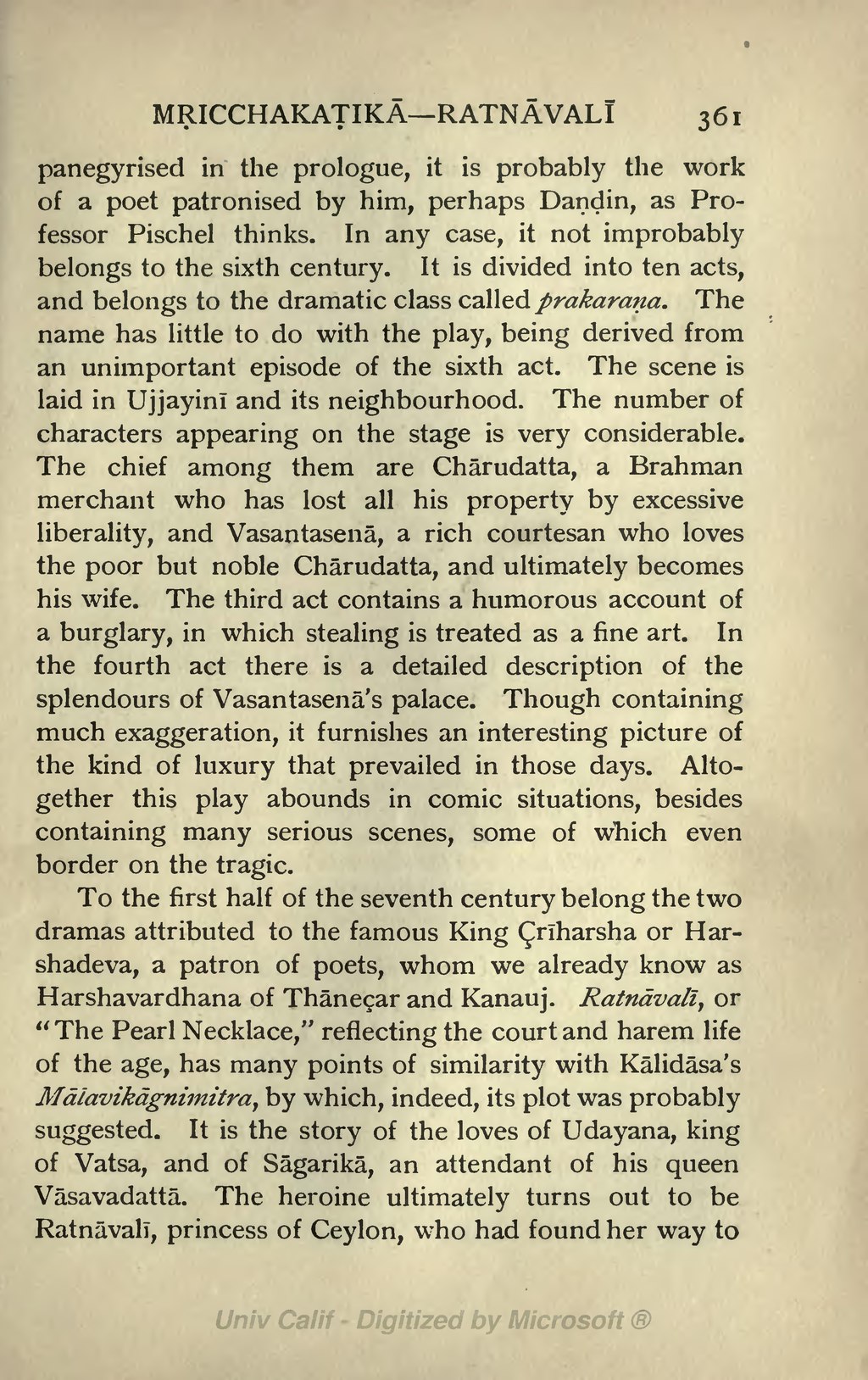panegyrised in the prologue, it is probably the work of a poet patronised by him, perhaps Daṇḍin, as Professor Pischel thinks. In any case, it not improbably belongs to the sixth century. It is divided into ten acts, and belongs to the dramatic class called prakaraṇa. The name has little to do with the play, being derived from an unimportant episode of the sixth act. The scene is laid in Ujjayinī and its neighbourhood. The number of characters appearing on the stage is very considerable. The chief among them are Chārudatta, a Brahman merchant who has lost all his property by excessive liberality, and Vasantasenā, a rich courtesan who loves the poor but noble Chārudatta, and ultimately becomes his wife. The third act contains a humorous account of a burglary, in which stealing is treated as a fine art. In the fourth act there is a detailed description of the splendours of Vasantasenā's palace. Though containing much exaggeration, it furnishes an interesting picture of the kind of luxury that prevailed in those days. Altogether this play abounds in comic situations, besides containing many serious scenes, some of which even border on the tragic.
To the first half of the seventh century belong the two dramas attributed to the famous King Çrīharsha or Harshadeva, a patron of poets, whom we already know as Harshavardhana of Thāneçar and Kanauj. Ratnāvalī, or "The Pearl Necklace," reflecting the court and harem life of the age, has many points of similarity with Kālidāsa's Mālavikāgnimitra, by which, indeed, its plot was probably suggested. It is the story of the loves of Udayana, king of Vatsa, and of Sāgarikā, an attendant of his queen Vāsavadattā. The heroine ultimately turns out to be Ratnāvalī, princess of Ceylon, who had found her way to
